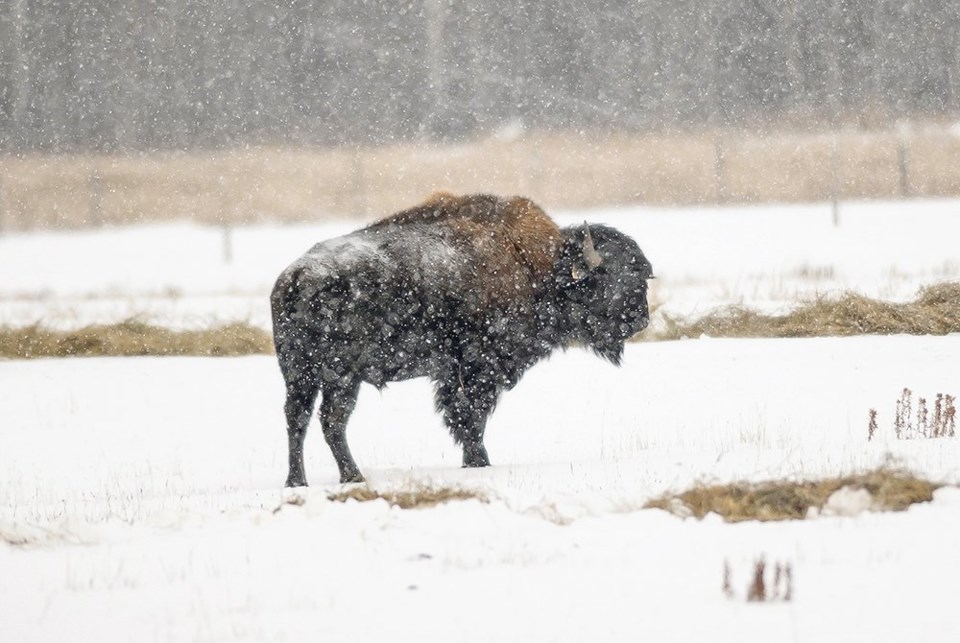However, in some of those areas, the early December snowfall was the first of the year, which does little to alleviate fears that last summer’s drought is continuing.
Last week’s precipitation in southern Alberta and southwestern Saskatchewan was only one of a handful of moisture events to hit the region since June.
For Andy Kirschenman, who farms near Hilda, Alta., near the Saskatchewan border, the lack of fall moisture that followed weeks of a blistering hot summer is providing little confidence in what’s to come next spring.
“We haven’t seen anything like this since the ’80s,” said Kirschenman. “And there are areas that have been quite a bit worse.”
Accumulations at the nearby Schuler weather station record the long-term, yearly average precipitation to Dec. 1 at 340 millimetres. This year it’s 190 mm.
The first two months of fall have seen normal precipitation nearly cut in half from historical averages.
“A third of my acres are in winter cereals and the vast majority of them didn’t even emerge — we didn’t have enough moisture to germinate fall rye or winter wheat which is pretty much unheard of,” said Kirschenman.
Ranchers in the southern parts of the two provinces are seeing the bottoms of their dugouts for the first time in a generation and that’s a situation that North Star Seed agronomist Brian Palichuk said is a major concern.
“Even if we get a very wet spring and summer, the conditions of the dugouts are drastic,” he said. “A lot of producers that rely on dugout water will not be able to make the year. So we need a runoff — it’s desperate.”
Continued dry weather throughout the winter might not be so bad for farmers, said Palichuk, as there is some flexibility leading into the spring.
“Agriculture is such that we don’t stick to a plan, we typically have four or five plans. If plan A, B or C don’t work out, we go to plan D,” he said.
But there could be costs associated with the need for rapid shifts.
“I’m in the forage seed business and I’ve seen customers looking at alternative methods like cover crops just to reduce their fertility costs and trying to have a soil profile with fertility,” said Palichuk. “People are exploring options just because of availability and foreseeable cost increases.”
Kirschenman said for his operation, which is still feeling the effects of a devastating 2017 grassfire, they will be moving to all cereal crops.
“We’ve been constantly battling to get residue on that ground that burned so we’re going all cereals because that’s our best straw growing crops — we’re just trying to get cover back,” he said.
Both Palichuk and Kirschenman say a wet spring will make all the difference for 2022 in southeastern Alberta and southwestern Saskatchewan.
From a historical perspective, that’s what they should expect, said Ralph Wright, head of agro-meteorological applications and modelling with Alberta Agriculture.
“Â鶹ÊÓƵern Alberta is an unusual place in the province that in the past, it’s had some really heavy snowstorms especially in the spring,” said Wright. “You get one of those spring snowstorms and it can pretty much give you a good start on next year’s planting season.”
That’s what happened during the last drought, which hit the region in the early 2000s, said Wright, adding that depleted moisture levels were remedied in a single spring.
While the region is traditionally one of the driest, that tends to flip-flop in the spring, added Wright.
“If you look at yearly precipitation over 100 years, you will find it beats everyone when it comes to getting the bigger wingers,” he said of the spring precipitation. “It might be the driest place but it’s subjected to some of the wettest weather — when it comes it really comes.”
Kirschenman said regardless of what 2022 brings, 2021 proved a valuable lesson to the region’s farmers.
“We’ve got to think about it because it’s going to come again,” he said. “We’ve got to figure out how we stay profitable or lose the least amount of money in a year like 2021. That might be reducing fertility, reducing seeding rates. There might be some things that we can do to save us money that maybe doesn’t grow us the best yields on an exceptional year.”




